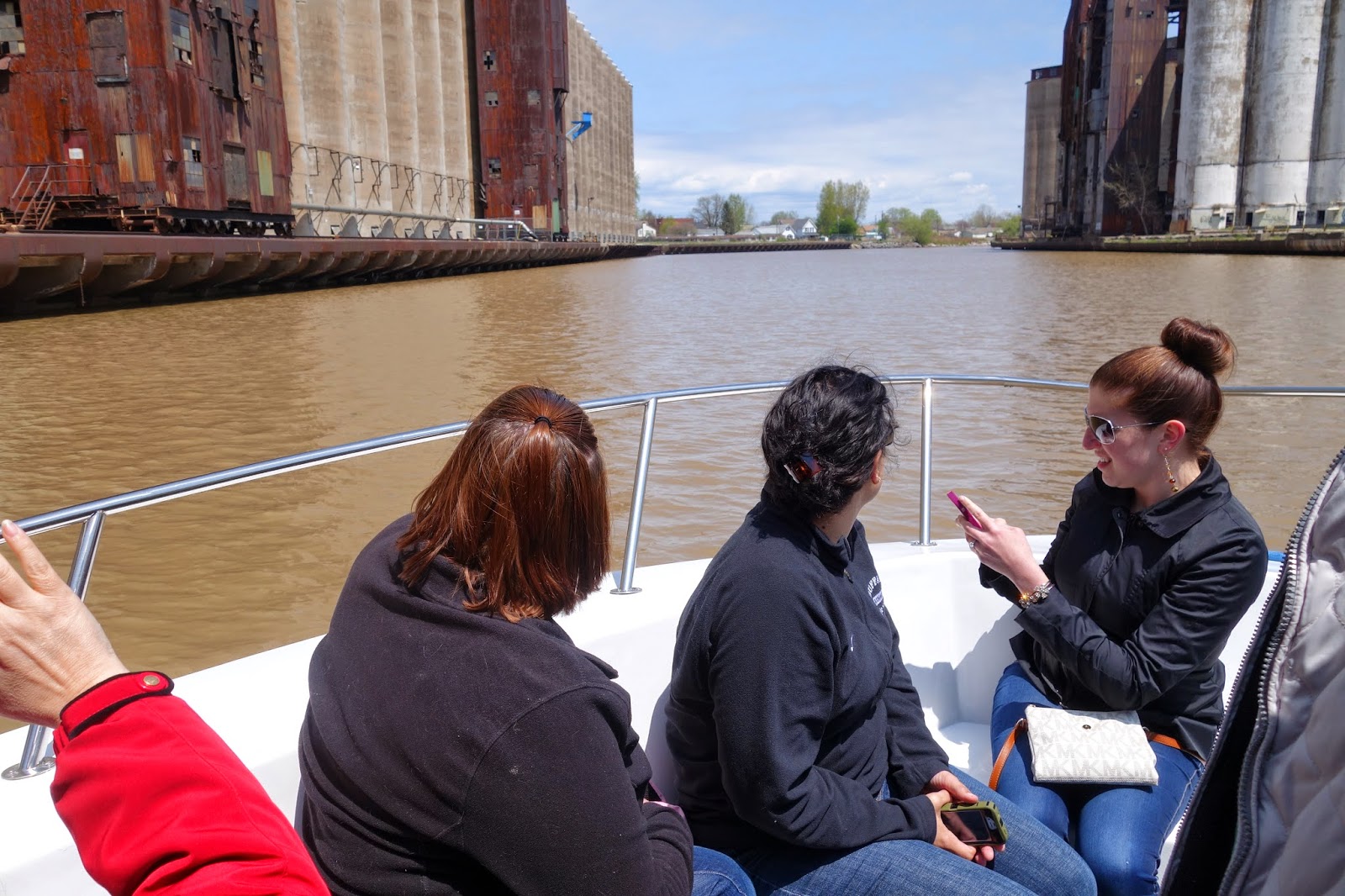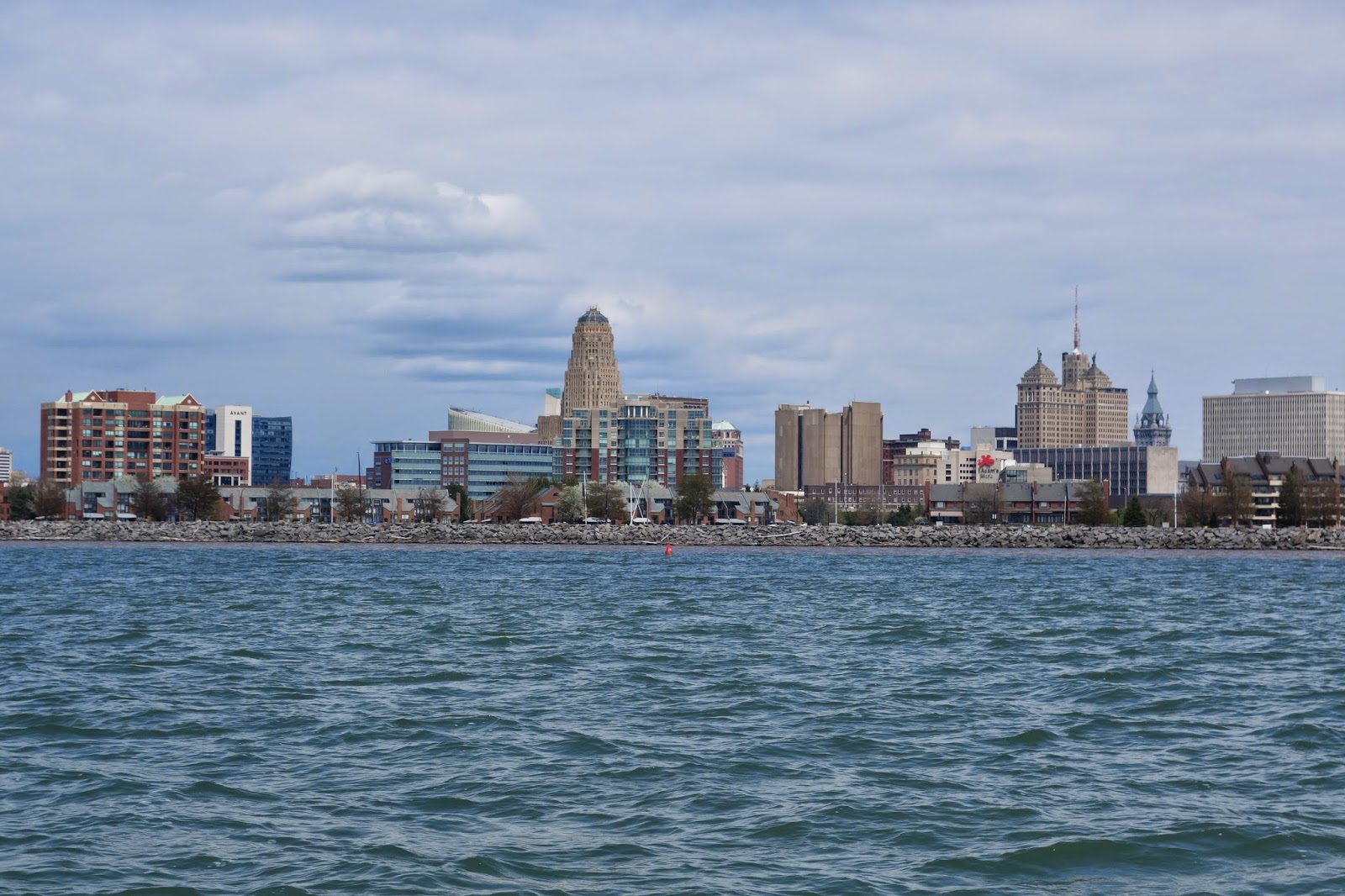 Scenes of massive snowfall in Great Lakes communities like Kalamazoo and Buffalo may become a thing of the past. A new study out of the University of Wisconsin suggests the region could see less lake effect snow as soon as the mid-21st century due to climate change. The total amount of precipitation will likely go up, but warmer temperatures and less lake ice means the air blowing east across the lakes will bring rain instead.
Scenes of massive snowfall in Great Lakes communities like Kalamazoo and Buffalo may become a thing of the past. A new study out of the University of Wisconsin suggests the region could see less lake effect snow as soon as the mid-21st century due to climate change. The total amount of precipitation will likely go up, but warmer temperatures and less lake ice means the air blowing east across the lakes will bring rain instead.
From the Post-Standard:
The biggest change from snow to rain would be in November, the study shows, making the massive lake effect storm near Buffalo last month less likely by 2100. That storm dumped 90 inches of snow in some areas in five days. Thirteen people died and more than 100 miles of the New York State Thruway was shut down for days.
 [Michael] Notaro’s article was published in the Journal of Climate just days before the Buffalo-area storm. He is a senior scientist at the Nelson Institute Center for Climatic Research in Madison, Wisc.
[Michael] Notaro’s article was published in the Journal of Climate just days before the Buffalo-area storm. He is a senior scientist at the Nelson Institute Center for Climatic Research in Madison, Wisc.
The paradox of lake effect snow, however, is that before it begins to drop off after 2050 it might actually increase for a few decades, according to research by Notaro and Colgate University professor Adam Burnett.
“My original idea was that in the short run, as the lakes become warmer and and lake ice disappears, we would still have enough cold air around to produce lake effect snow,” said Burnett, whose 2003 study showed a rise in lake effect snow from Lake Ontario. “You could end up with some pretty serious snows like we saw in Buffalo.” Read more
***Photo A: Lake effect snow near Buffalo, NY in November. Photo by Michael Garrood.
***Photo B: From WGGB in western Massachusetts.
 The Great Lakes Legacy Act remediation project on the Buffalo River resumed June 16, and will remove 500,000 cubic yards of contaminated sediment from the river, then replace native aquatic plants to help restore the local ecosystem.
The Great Lakes Legacy Act remediation project on the Buffalo River resumed June 16, and will remove 500,000 cubic yards of contaminated sediment from the river, then replace native aquatic plants to help restore the local ecosystem.
18 teachers from grades 4-11 attended the workshop to learn more about the restoration project and the curriculum, and were treated to hands-on activities and a tour of the river area to help bring the project and its impacts into their classes.
 “It’s great to see so many educators come out to this kind of workshop,” Caitie said. “Many teachers want to incorporate place-based learning in their science curriculum, but may lack resources to do so. Now instead of using distant examples like rainforests to teach science, they can use their neighborhood rivers and lakes. These are places that students can visit and experience the science in person. They develop a love for these places and want to protect them.”
“It’s great to see so many educators come out to this kind of workshop,” Caitie said. “Many teachers want to incorporate place-based learning in their science curriculum, but may lack resources to do so. Now instead of using distant examples like rainforests to teach science, they can use their neighborhood rivers and lakes. These are places that students can visit and experience the science in person. They develop a love for these places and want to protect them.”
The National Weather Service’s Weather-Ready Nation initiative was begun to help communities throughout the country better prepare for and respond to severe weather events. Much of that preparedness has to do with increasing the speed, accuracy, and effectiveness of weather monitoring and warning mechanisms on the local level. And finding the strongest ways to communicate weather messages to residents is key.
That is why, as part of the Weather-Ready Nation project, the Great Lakes Social Science Network conducted extensive research into the most effective impact-based warnings. Their report, “Evaluation of the National Weather Service Impact-based Warning Tool,” utilized interviews, focus groups, and surveys to determine the most and least effective ways for broadcast meteorologists and emergency managers to communicate these warnings to the public.
National Weather Service piloted an impact-based warning system in 2012 in five select offices, and expanded it to the central region’s 38 offices in 2013. The report offers a sort of mid-term evaluation of the system’s effectiveness and stakeholders’ perceptions of it, while also providing recommendations for further training and implementation improvements.
This research was a team effort between representatives from five Great Lakes Sea Grant programs. Caitie McCoy and Leslie Dorworth from Illinois-Indiana Sea Grant were involved, as well as Dr. Jane Harrison (Wisconsin Sea Grant), Dr. Kathy Bunting-Howarth (New York Sea Grant), Hilarie Sorensen (Minnesota Sea Grant), Katie Williams (University of Wisconsin-Milwaukee), and Dr. Chris Ellis (NOAA Coastal Services Center). The report was presented earlier this year to the Social Coast Forum in Charleston, SC, sparking a number of other groups and agencies to inquire about the report and possible opportunities to expand on it with further research.
For further information about the Great Lakes Social Science Network, as well as training and future research projects, visit the link above.
 Scenes of massive snowfall in Great Lakes communities like Kalamazoo and Buffalo may become a thing of the past. A new study out of the University of Wisconsin suggests the region could see less lake effect snow as soon as the mid-21st century due to climate change. The total amount of precipitation will likely go up, but warmer temperatures and less lake ice means the air blowing east across the lakes will bring rain instead.
Scenes of massive snowfall in Great Lakes communities like Kalamazoo and Buffalo may become a thing of the past. A new study out of the University of Wisconsin suggests the region could see less lake effect snow as soon as the mid-21st century due to climate change. The total amount of precipitation will likely go up, but warmer temperatures and less lake ice means the air blowing east across the lakes will bring rain instead. [Michael] Notaro’s article was published in the Journal of Climate just days before the Buffalo-area storm. He is a senior scientist at the Nelson Institute Center for Climatic Research in Madison, Wisc.

